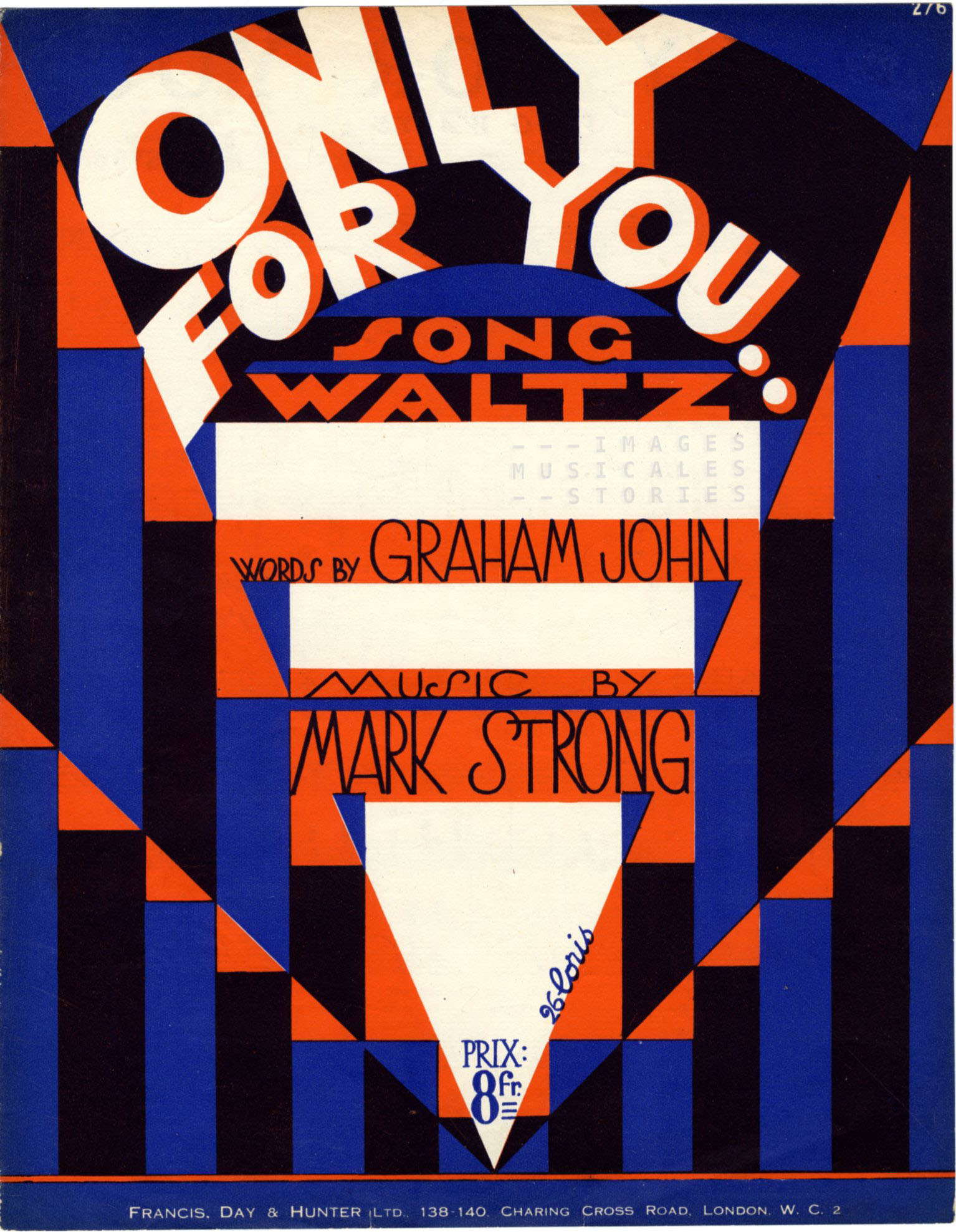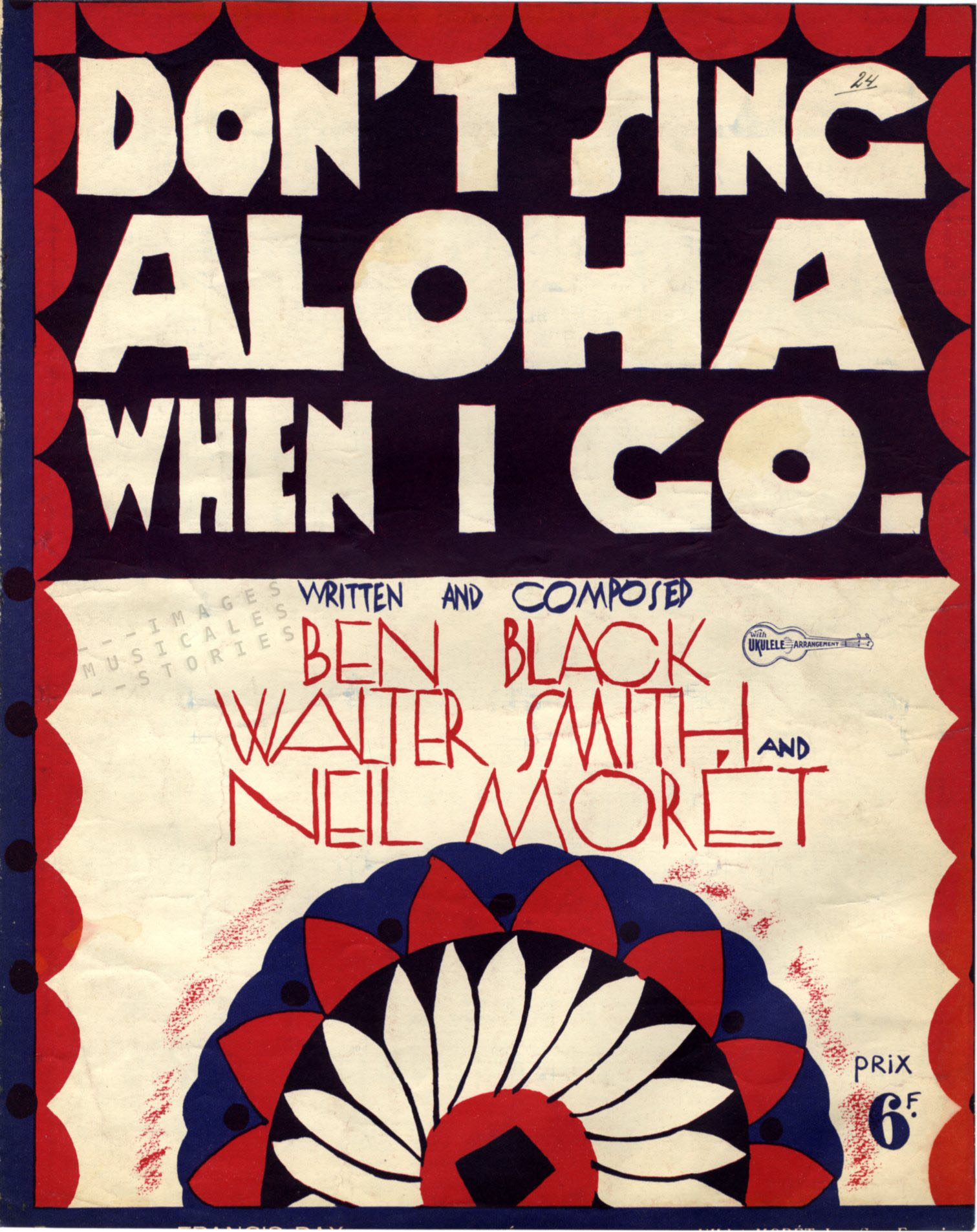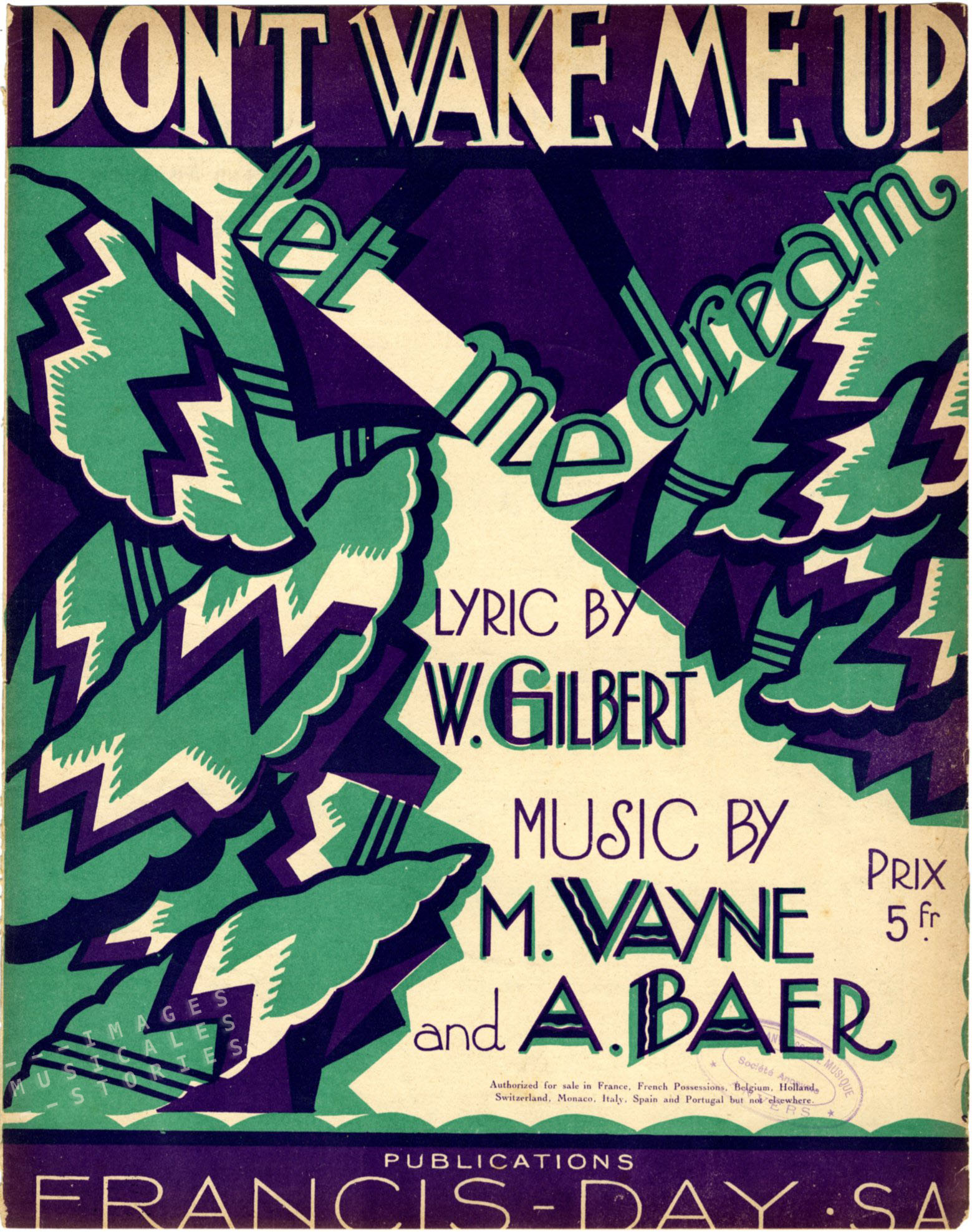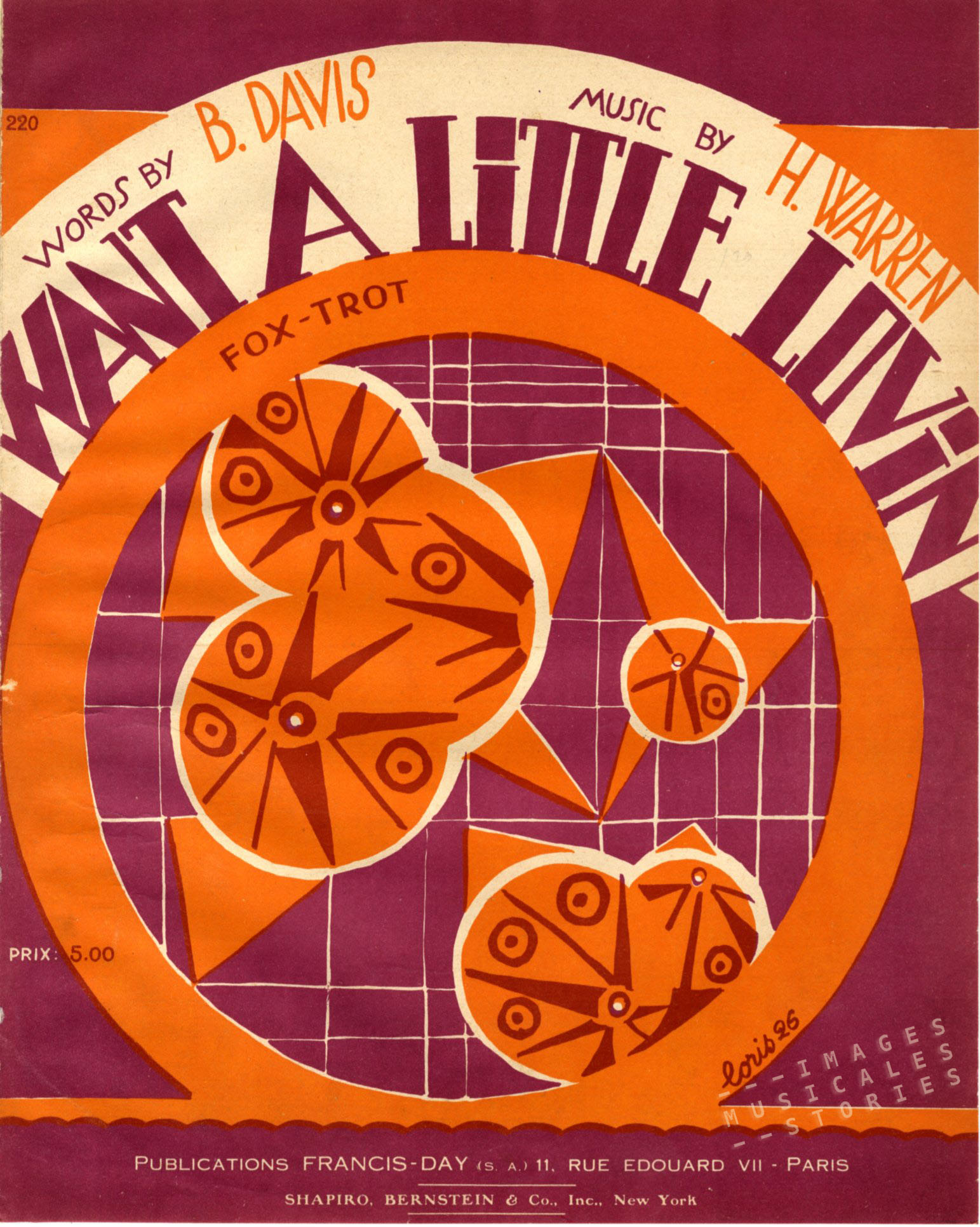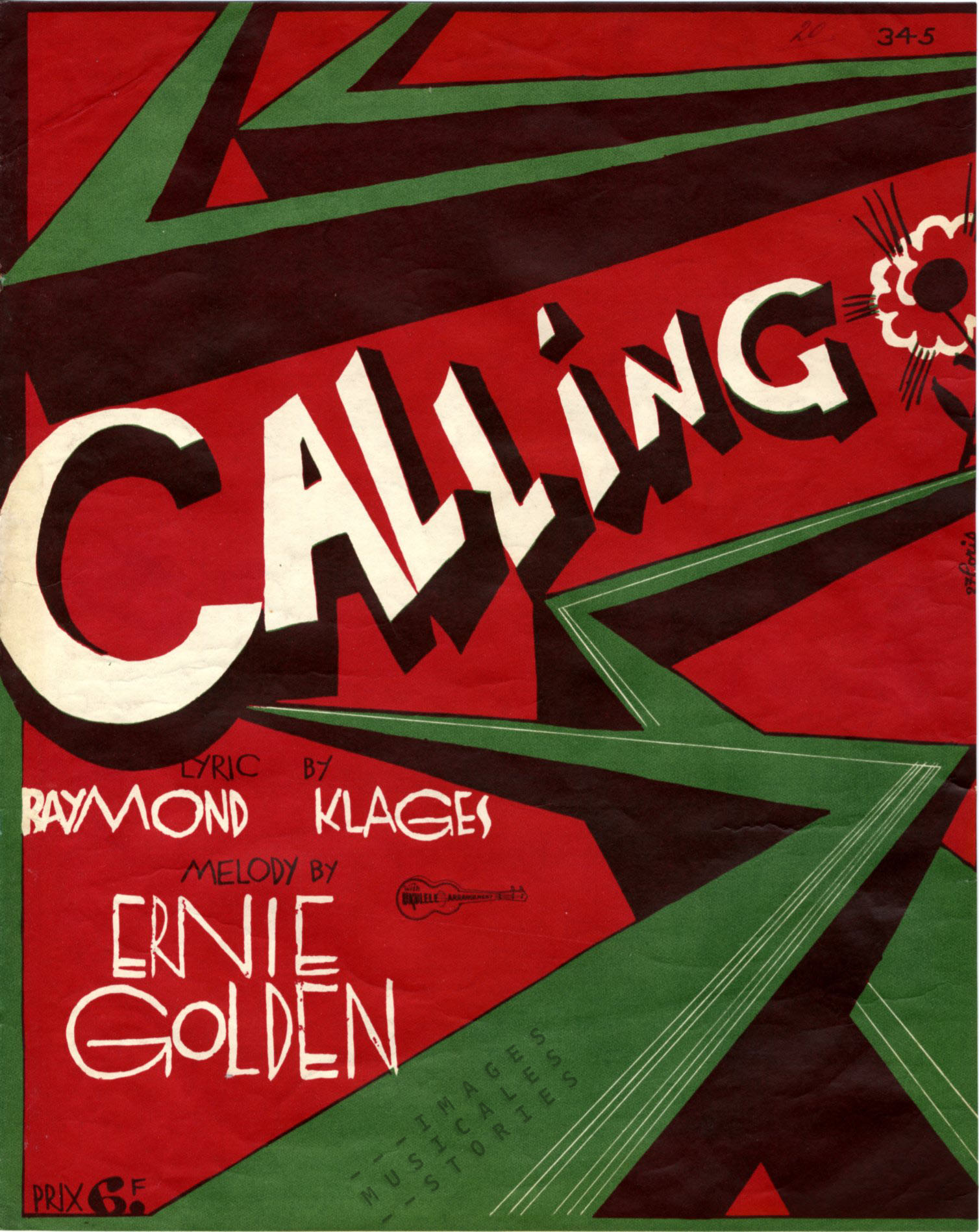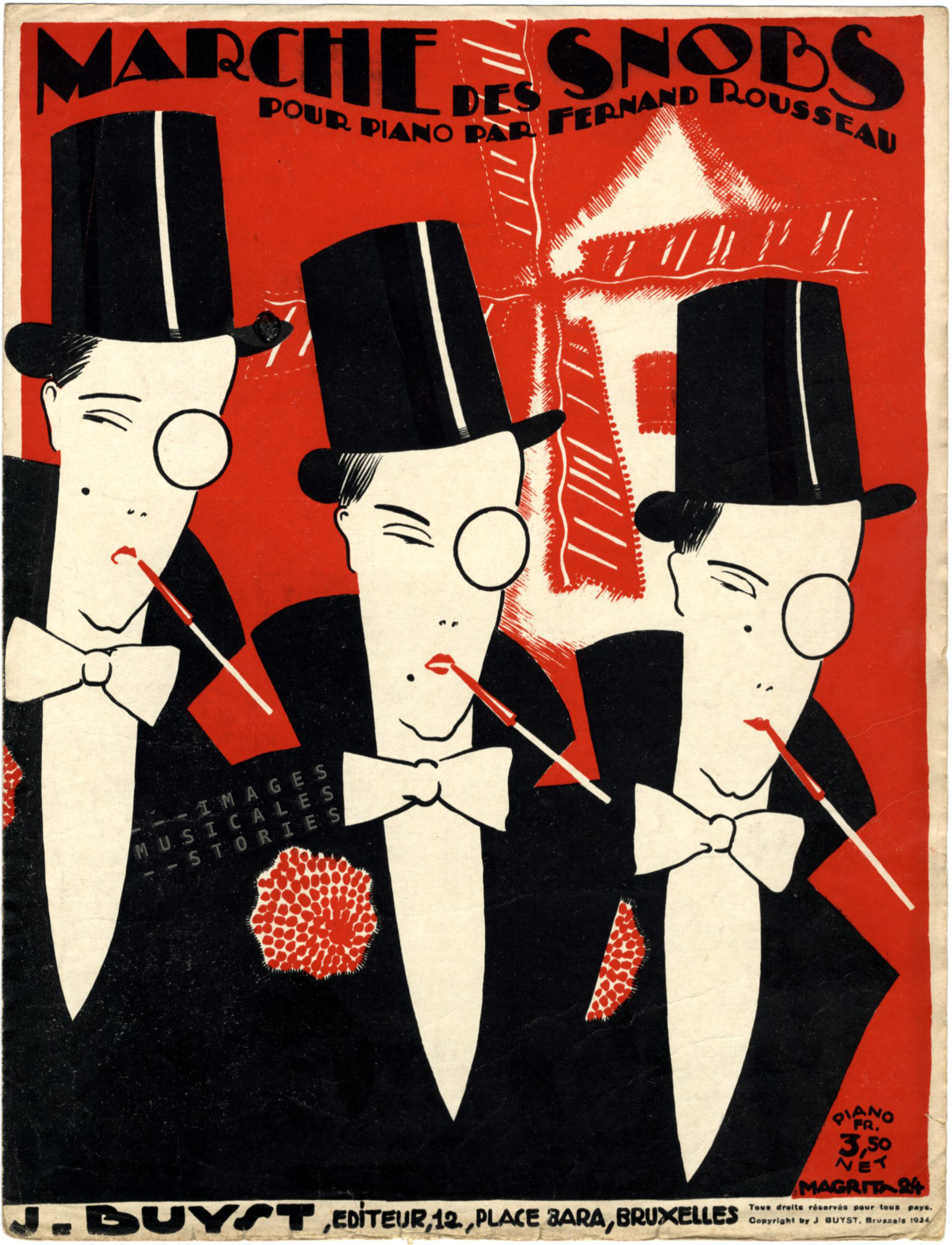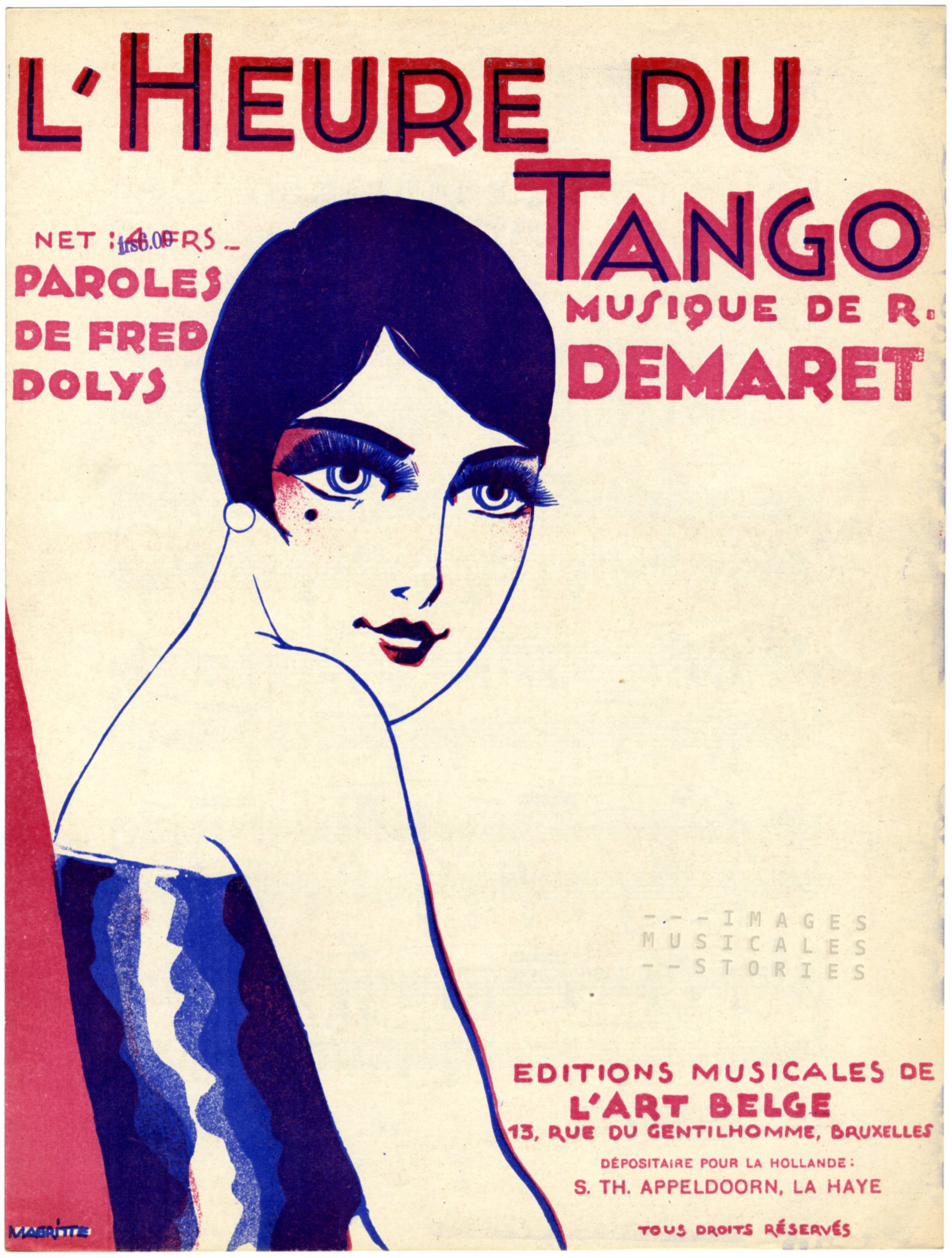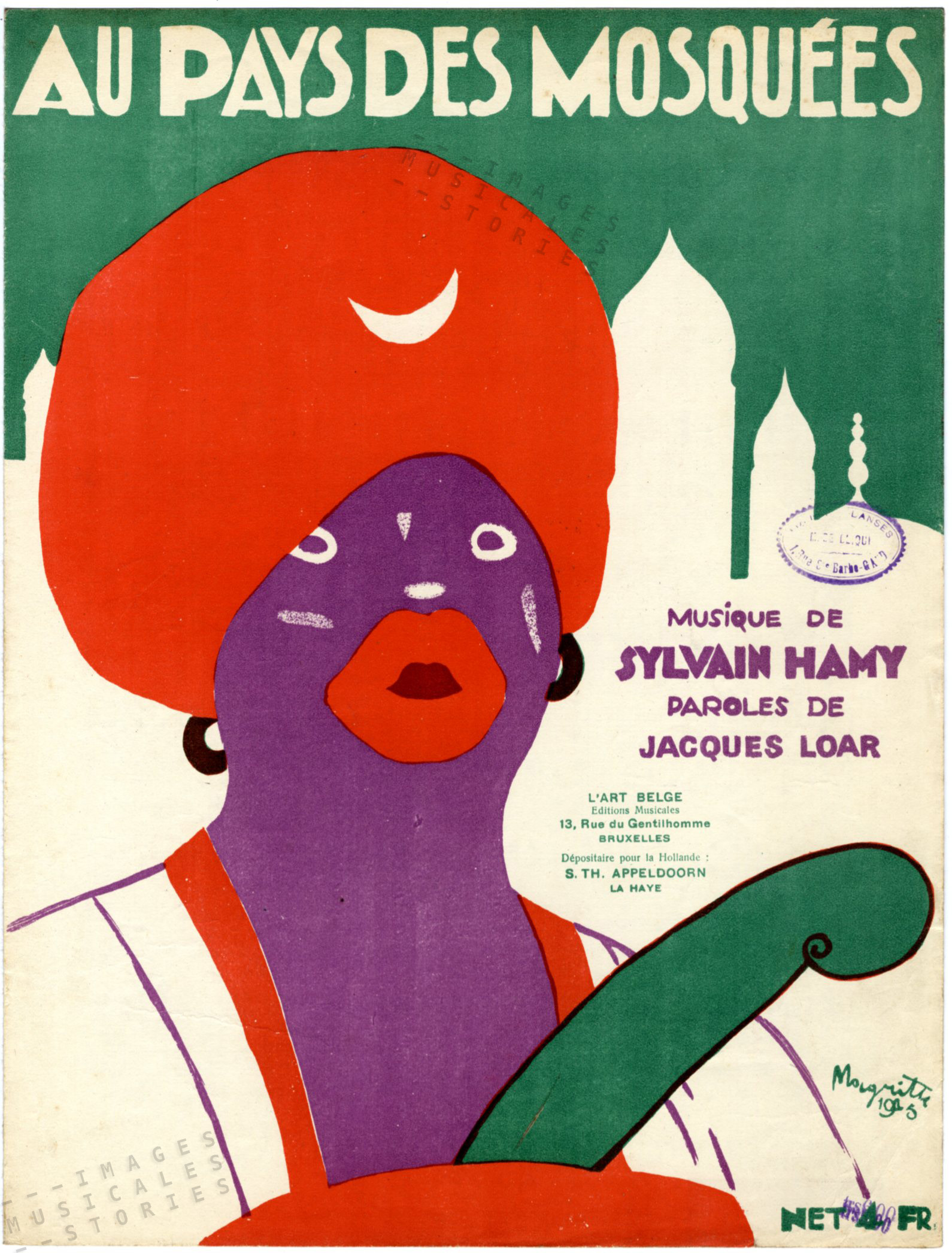
The ‘Carnaval de Nice‘ waltz by Maurice Decourcelle was published posthumously by his son Paul. The radiant cover is from artist André Douhin. The Bibliothèque Nationale de France lists 92 compositions by Maurice Decourcelle (1815-1888), almost all of them published in Paris. His four latest compositions were published in Nice by his son Paul Decourcelle: three of them in 1882, and the ‘Carnaval de Nice‘ above, twelve years later, in 1894. The three earlier publications show definitely less attractive covers by Ernest Buvall.
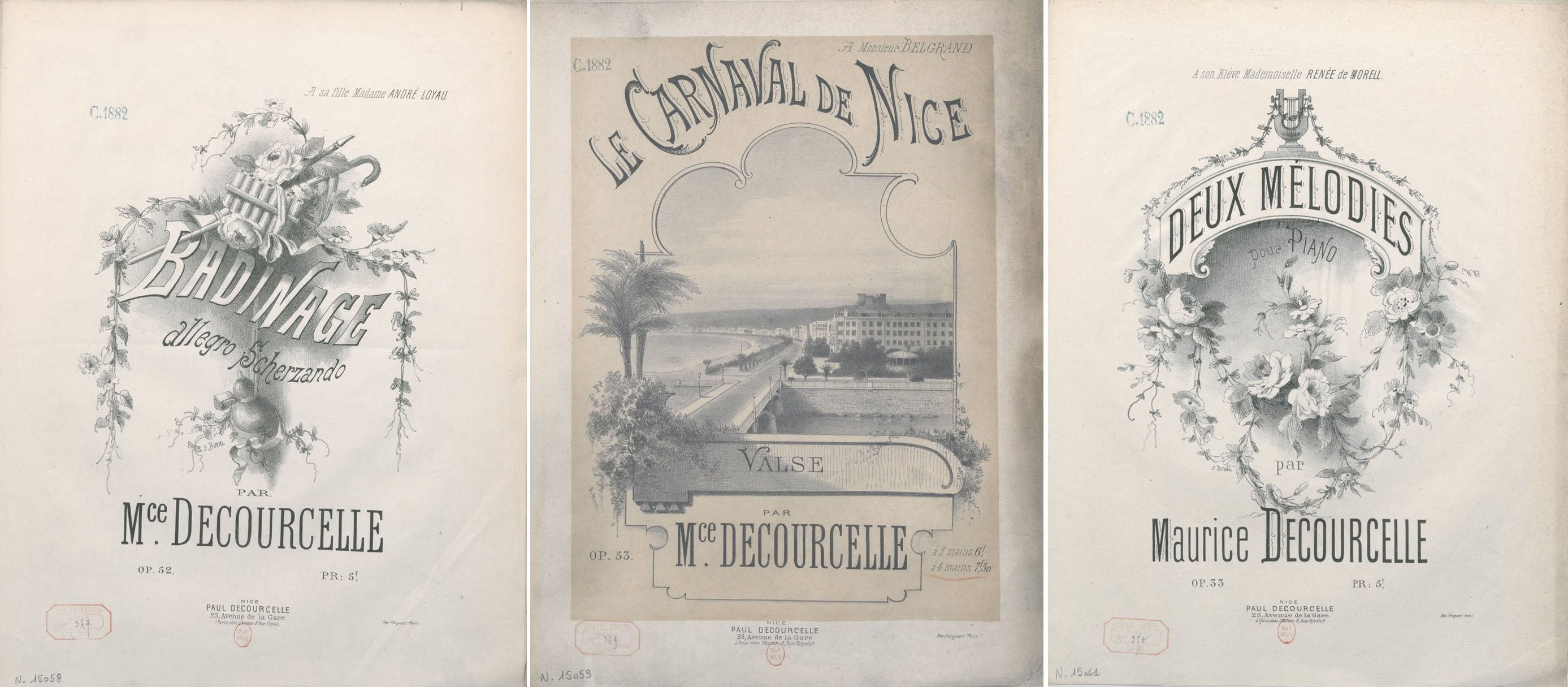
Ernest Buvall was a popular and typical 19th-century illustrator, who created romantic and often dreary covers. Luckily for all lovers of sheet music, André Douhin took over his work at Decourcelle, well in time to enter the fin de siècle: gaiety, dancing and partying in festive colours!

Paul Decourcelle (1854-1940), the son of Maurice, was not only a publisher but also a composer of polkas, marches and waltzes. His creations, under the nickname Heinrich Tellam, were undoubtedly targeted at the mondaine and cosmopolitan public, visiting the casinos and concert halls of the French Riviera. The stylish covers of Douhin, with graphical references to mosaics and stained glass, accentuated that musical chic.



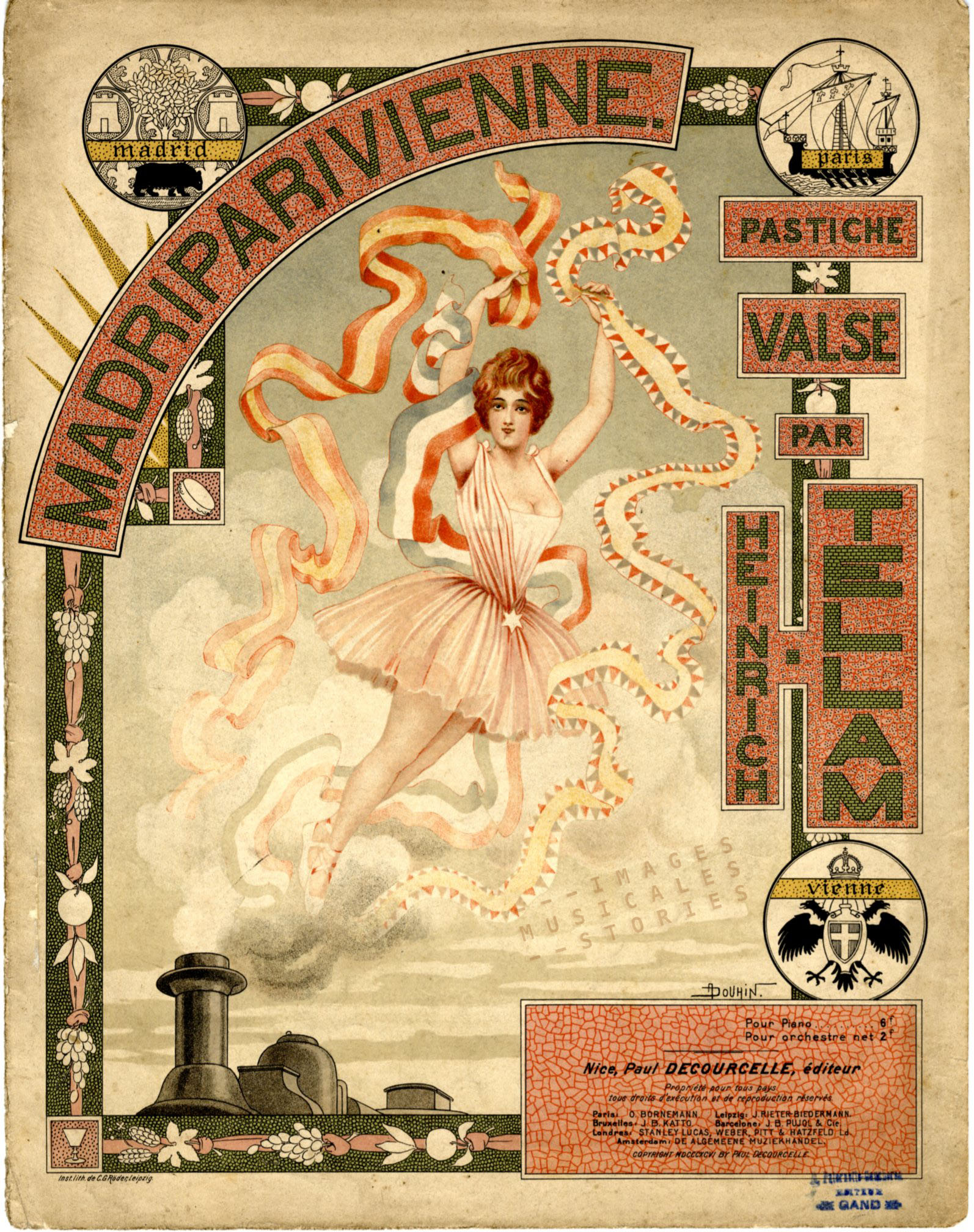
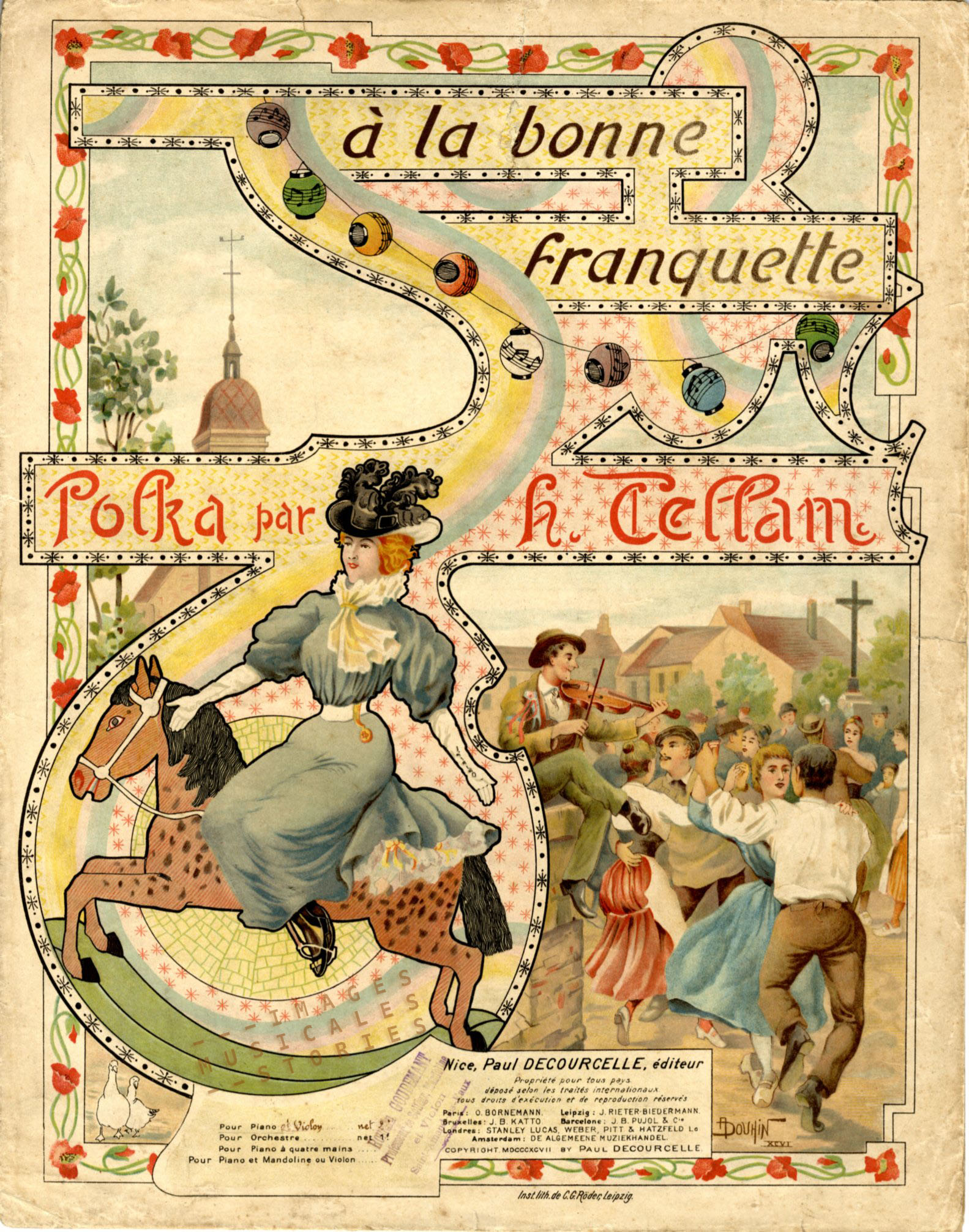
All the above covers from our sheet music collection by André Douhin are published in three years time (1894 until 1897). It is odd that we have to jump seven years to find the Polka des Polichinelles drawn in the same style. Or perhaps we need to collect a few more to fill the gap…
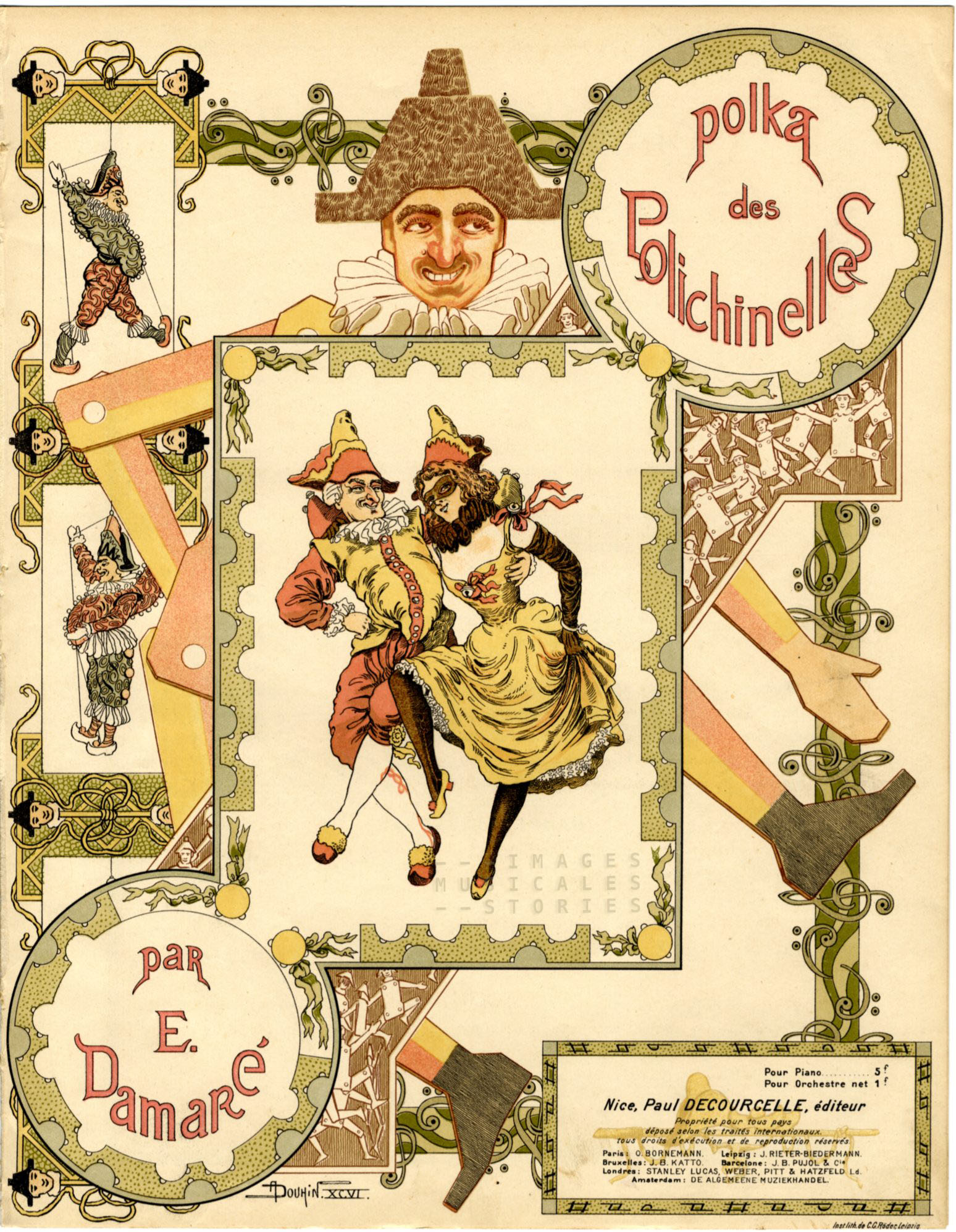
We couldn’t find a biography of the very talented illustrator Douhin. But we stumbled on his predilection for the slightly-erotic work. In 1903 he illustrated a book of Victor Nadal. It was probably intended as one of a series, Les Sept Péchés Capitaux (The Seven Deadly Sins). We were unable to find the other six books…

Perhaps the initial project about The Seven Deadly Sins was abandoned. In lieu of books, we found on the usual collector markets naughty postcards from around 1903 on the titillating theme, illustrated by André Douhin.
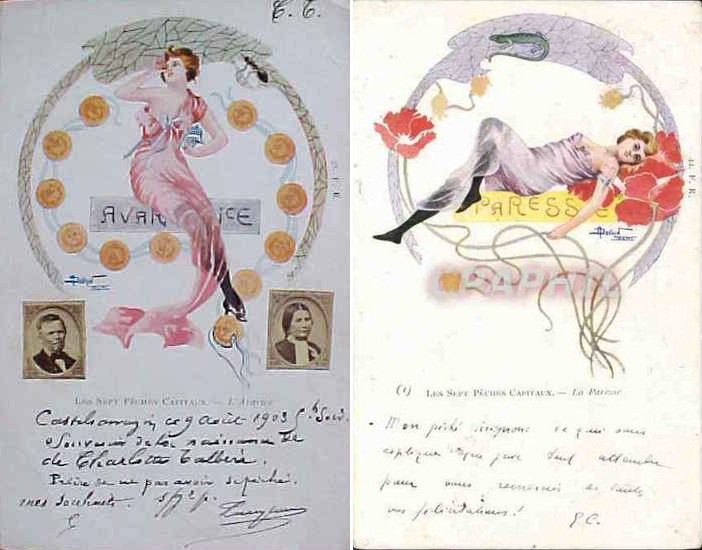
Illustrating bawdy postcards was back then perhaps a lucrative job, because we found other spicy ones illustrated by Douhin.
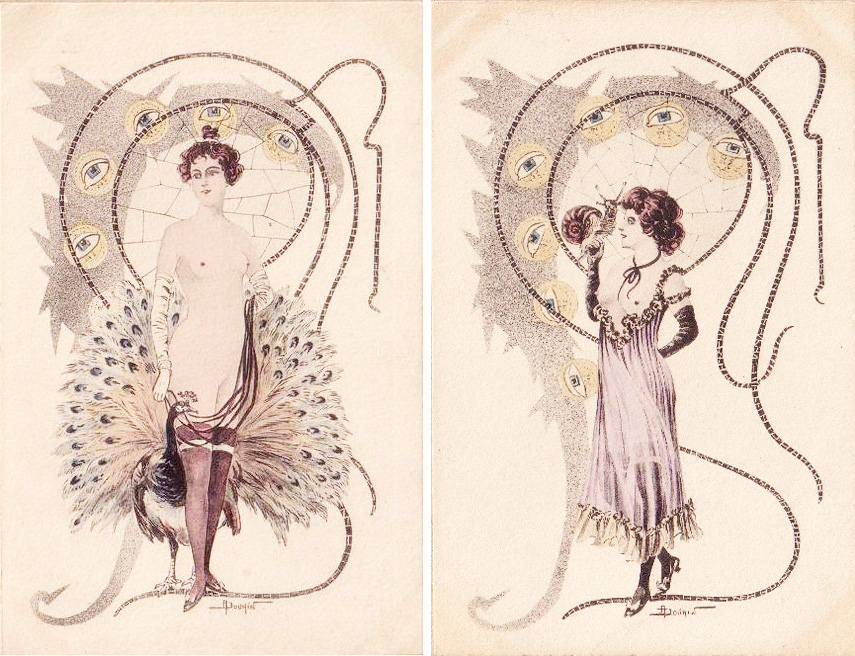

Searching the net for more Douhin postcards, brings the same old, same old. Also the expected few sketches, posters, magazine and book illustrations.
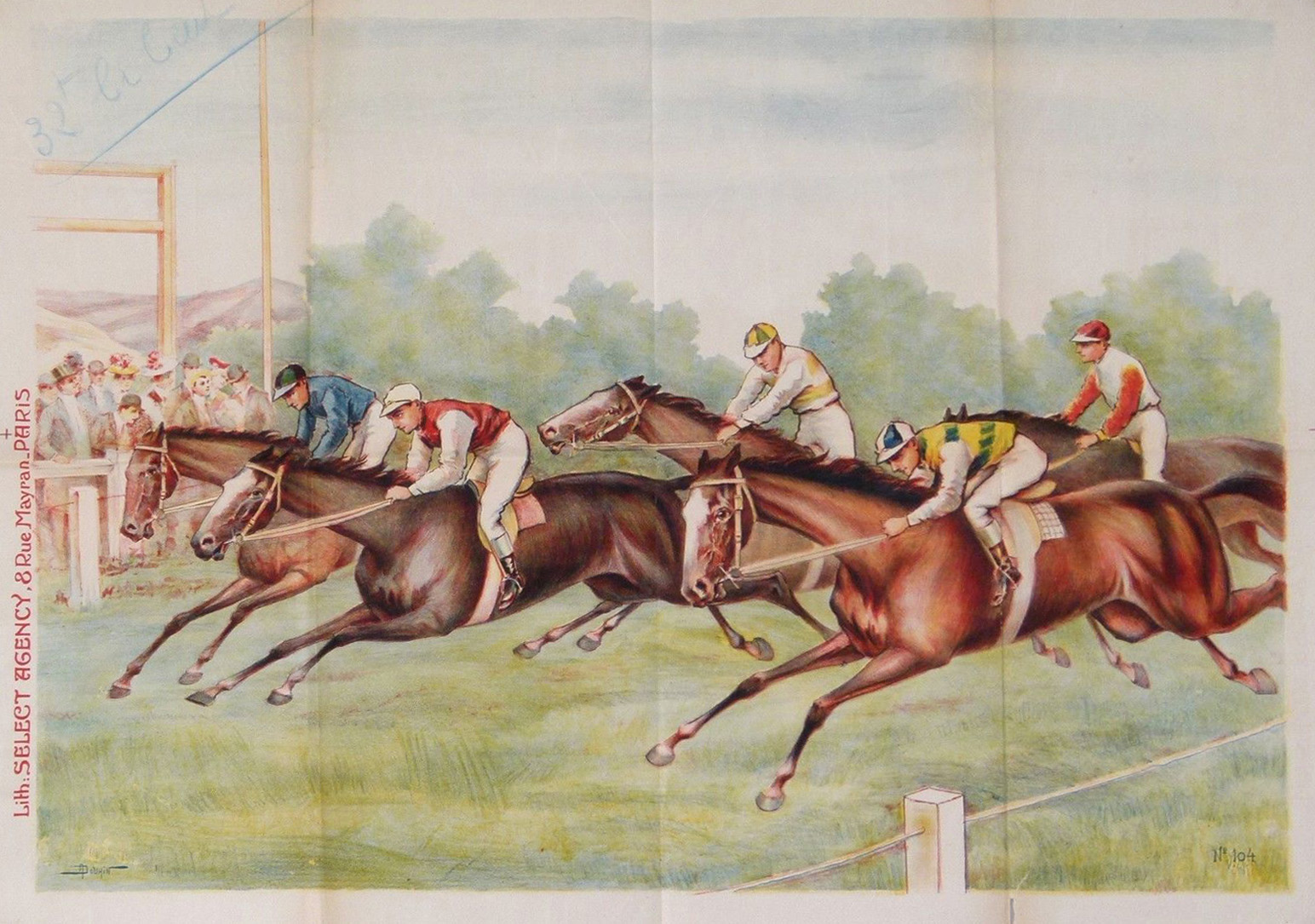
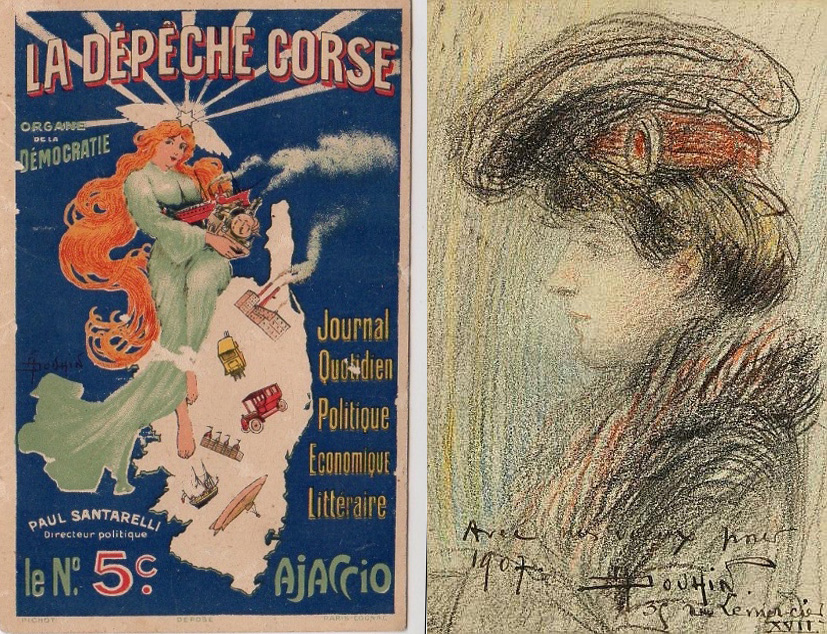
Out of the ordinary is the menu that Douhin drew for his friend Eugène Humbert. Humbert was one of the pioneers of the French neo-Malthusian movement, which in contrast to other countries, evolved in a radical revolutionist direction. Neo-Malthusianism advocates population and/or preventive birth control, promoting contraception.
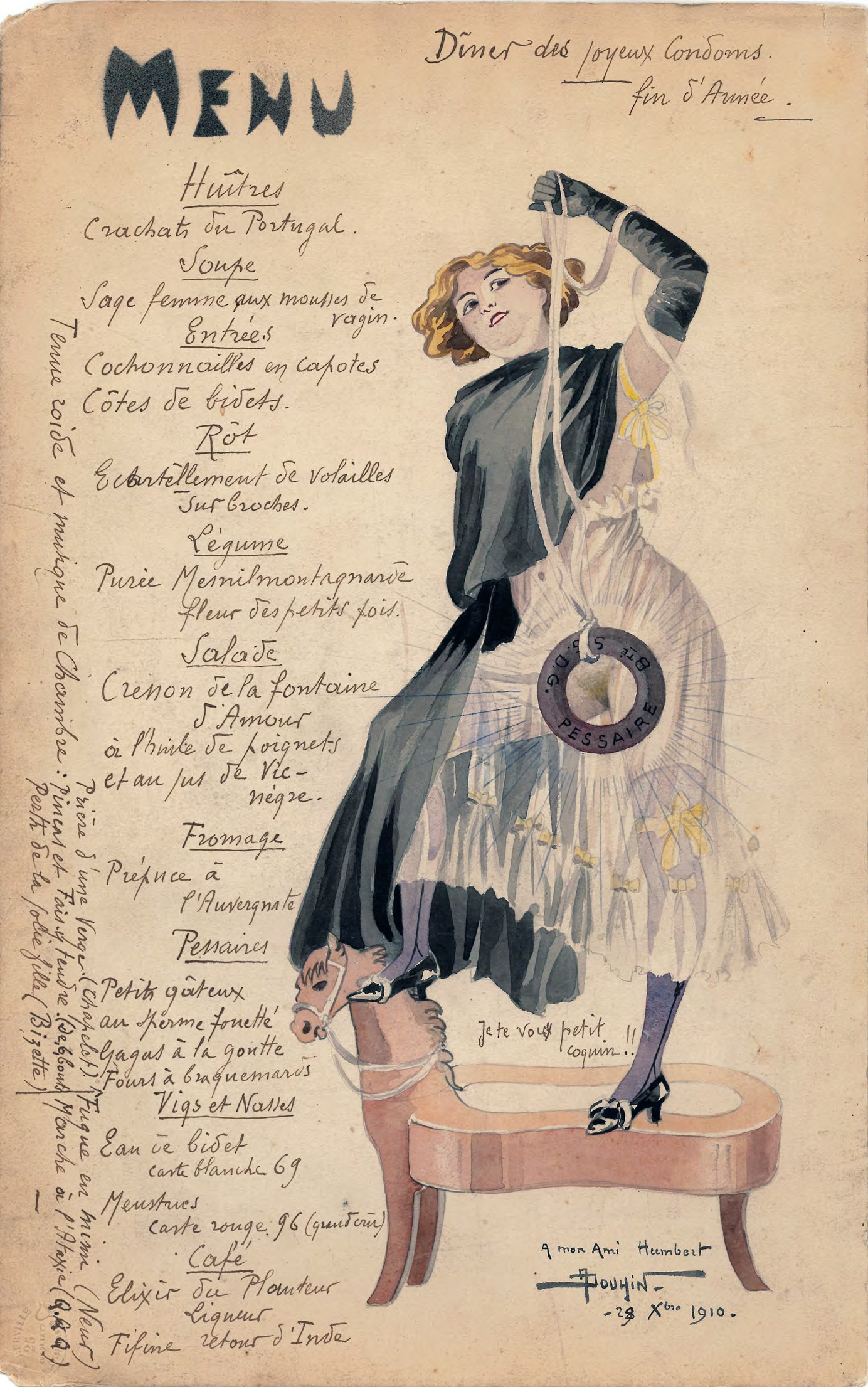
In 1936, André Douhin got killed when his car crashed into a tree between Paris and Rouen (in Vieux-Villez). He was 73 years old.
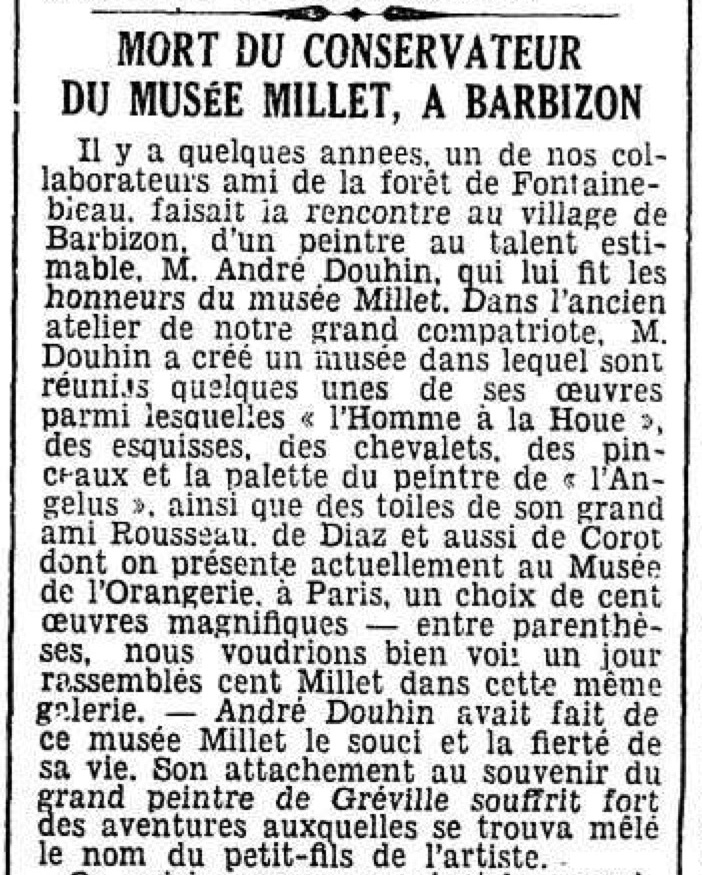
From the newspaper article announcing his death, we learn that Douhin had created a museum devoted to Jean-François Millet, in the master’s old workshop in Barbizon. He worked there as conservator, making it his life’s work to guard the legacy of Millet.

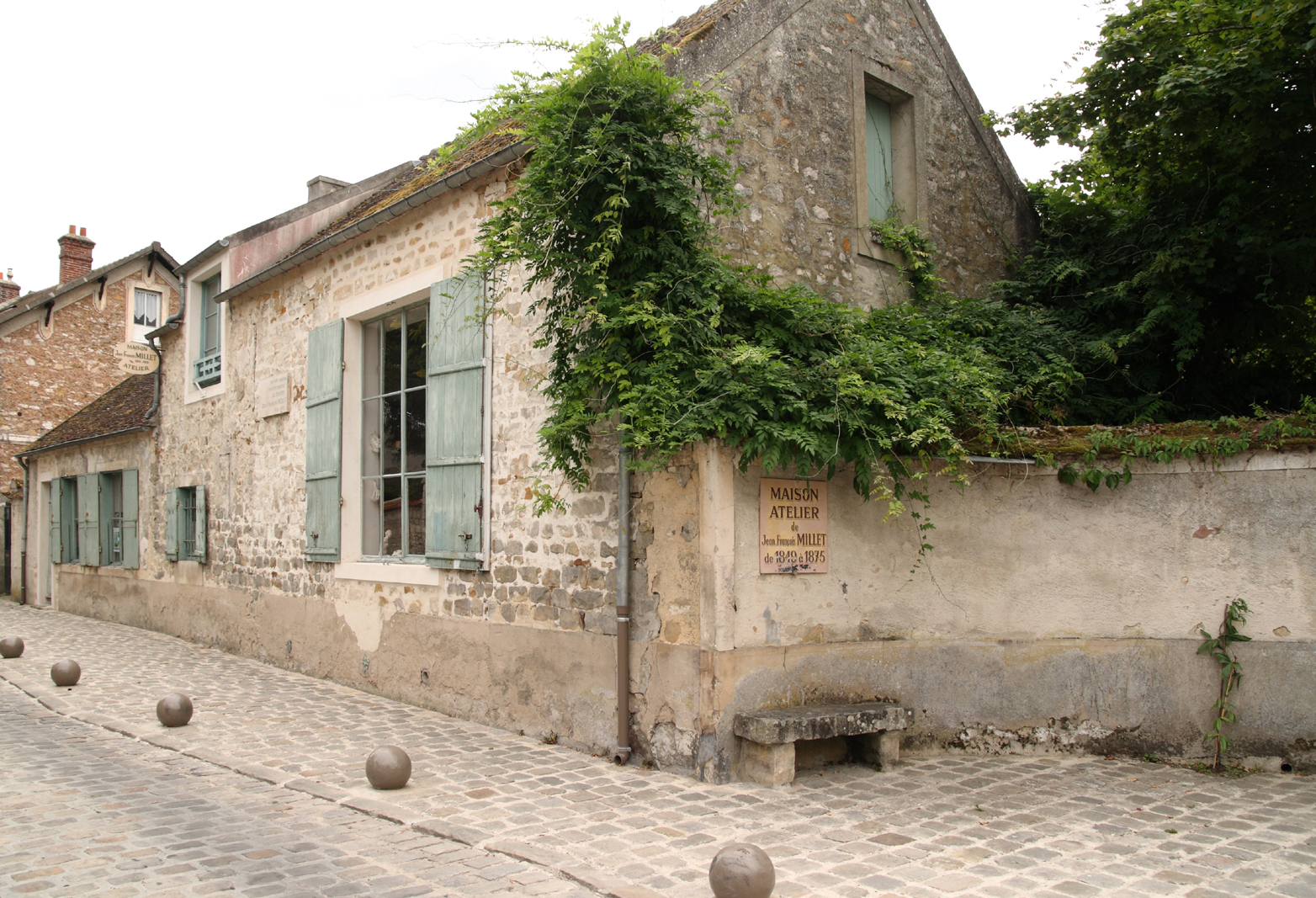
Millet…, yes! The iconic Angelus. One used to sing about everything so why not about the bucolic evening prayer?

Two more things. Firstly, we do not know if the cover artist signing as H. Viollet or Viollet-Douhin is related to André Douhin. It may be a collective signature for the cooperation between André Douhain and Henry Viollet.

Secondly. We don’t know where André Douhin was born, nor where he grew up. But imagining that he was from Nice (which is maybe not so far from the truth) got us a catchy title for this post.



